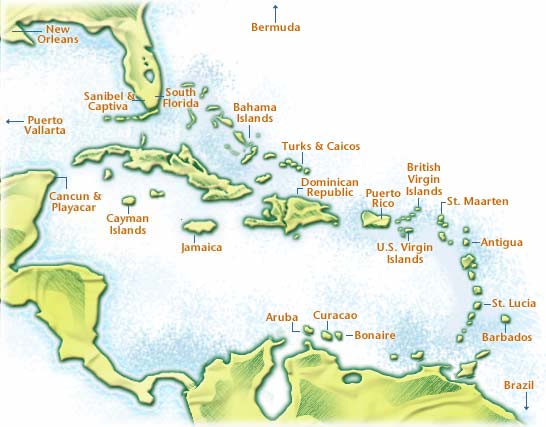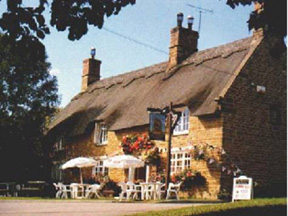Your One-Stop Information Center! Above! Over! Through!...and...Under! We serve You!
An acre of land in any place like Montana, Wyoming, United Kingdom or Similar in the world if you find a good one with quality Resources...will cost to you and your Funds about u$ 150.000 per acre/average price... In PATAGONIA prices are as you can check in some of the web pages I mentioned above like for 12.000 acres of Land, beautiful Ranch u$7.200.000 (u$600 dollars per acre of land you buy)... Only during the last week of March, for been here and connected with all the general areas of Interest in PATAGONIA we been offered places like the following:
Well, people, you got the last report/newsletter from the Patagonia areas for the Today's World... All my best and looking foreward to see you all in the rivers and visiting Patagonia, the land of the Future or PROMISE LAND... Tight loops and always yours,
Martin O'Farrell
Contact Martin at—
Making some intelligent guesses about the state of travel in a world where attention is focused on
war—following is my best stab at about air travel in the days and weeks to come. It is hardly
complete and subject to almost immediate change as the news from Iraq becomes clearer.
If you're taking your vacation, are self-employed or work for a small business, you may make your own decisions on when, if, or where to fly. If you're employed by a large corporation, however, the decision may rest with your firm's travel department. Your company may impose a temporary ban on some or all kinds of travel. You may be told not to fly on U.S. flag carriers on international routes. (You may be asked to avoid U.K. flag carriers, too.) Of course, few travelers are booking flights to the Middle East right now. The U.S. State Department issued a new Worldwide Travel Caution on the Middle East—as well as specific warnings for travel to bordering regions such as Turkey, Pakistan and East Africa.
Throw away your itineraries! Airlines around the world are slashing routes and schedules. More changes and cancellations will happen each passing day we are at war. Cuts and cancellations can come without advance notice—often without public announcement—and are usually effective immediately. Reconfirm every flight to every destination before departing for the airport. On your new bookings for future travel, make back-up plans. Flights listed on today's schedules—may not be operating when you are ready to fly. What flights are most vulnerable to cancellation? Obviously those to the Middle East and East Africa. Flights to Europe and Latin America—where many flights are available, are also being cut due to reduced demand. Asia-Pacific service is the least likely for swift cancellations—but some airlines have already dropped or cut service. No region is immune. Domestically, your Big Six airlines, all of whom are already losing lots of money, will reduce schedules first—then begin deleting cities off their route maps. The longer the war lasts, the faster the pace of the cuts. Low-fare airlines Southwest, AirTran and JetBlue have been more careful with their existing schedules, but an extended war will impact them, too. Most airlines have implemented "peace of mind" policies. You can change flight dates and destinations with little or no penalty. However, rules vary—so check with your airline and understand the conditions completely before changing. Your "rights" are even "cloudier" if your airline cancels your flight and unilaterally rebooks you. However, you are under no legal or financial obligation to accept what your airline assigns you if your airline has canceled your flight. If you cannot arrange a suitable replacement, contact your credit–card company and contest the charge. By law, credit-card firms cannot bill you for services not delivered. A canceled flight is an undelivered service.
Major changes at domestic airports have already happened—the Homeland Security Agency upgraded the nation's terror-alert status to "code orange". Expect a random search of your vehicle, when entering airport grounds. Most vehicles will be stopped and at least visually inspected. Close-in parking, usually within 300 feet of passenger terminals, is restricted or prohibited. Once you are inside the terminal, expect more demanding procedures at security-screening checkpoints and more aggressive measures to examine your checked bags. Have your boarding pass and identification available at all times. You are likely to be asked to produce them several times and at random locations. If the war drags on or if there are incidents of terrorism, expect security to be increased more dramatically. Curbside check-in may be suspended and random, at-the-gate, secondary security searches may be revived. No-parking perimeters around passenger terminals may be widened. Some airport access roads may be closed. Some airports may completely ban vehicles from approaching airport terminals. Passenger pick-up and drop-off would then be in remote locations at distant edges of airport grounds.
Airport amenities will also diminish as weeks drag on. If passenger traffic drops steeply, some
airport clubs will close and hours of operation at other lounges will be reduced. Some food and
retail facilities will close or reduce operations. In extreme circumstances, some airports will close
terminals and flights will be concentrated at fewer gates and concourses.
Welcome To Paradise... |
|||||||||||||||||||||||||||||||||||||||||||||||||||||||||||||||||||||||||||||||||||||||||||||||||||||||||||||||||||||||||||||||||||||||||||||||||||||||||||||||||||||||||||||||||||||||||||||||||||||||||||||||||||||||||
| ENGLAND: BOTTOMS UP ENGLISH PUB TOUR | ||
|
||||||||||||||||||||||||||||||||||||||||||||||||||||||||||||||||||||||||||||||||||||||||||||||||||||||||||||||||||||||||||||||||
|
|
|||||||||||||||||||||||||||||||||||||||||||||||||||||||||||||||||||||||||||||||||||||||||||||||||||||||||||||||||||||||||||||||
Detailed Day By Day Itinerary Day 1: Arrive London / Cambridgeshire / Duxford / Leicestershire  Pick up Car Rental and drive to Duxford. Stop for
lunch at the John Barleycorn Pub. Visit the American
Aeronautical Museum at Duxford Aerodrome. Continue to
Leicestershire and overnight at a local country Pub for some
excellent Real Ales and local cuisine. Pick up Car Rental and drive to Duxford. Stop for
lunch at the John Barleycorn Pub. Visit the American
Aeronautical Museum at Duxford Aerodrome. Continue to
Leicestershire and overnight at a local country Pub for some
excellent Real Ales and local cuisine. Day 2: Sibson / Nottinghamshire / Derbyshire  In Sibson have morning coffee at the Cock Inn one of
England Oldest Inns dating back to 1250. Continue to
Nottinghamshire and visit Ye Olde Trip Inn, dating back to
1070 AD, frequented by King Richard and the crusade soldiers.
Continue in to Derbyshire and overnight at a 200 year old Inn. In Sibson have morning coffee at the Cock Inn one of
England Oldest Inns dating back to 1250. Continue to
Nottinghamshire and visit Ye Olde Trip Inn, dating back to
1070 AD, frequented by King Richard and the crusade soldiers.
Continue in to Derbyshire and overnight at a 200 year old Inn.
Day 3: Derbyshire / Cotswold 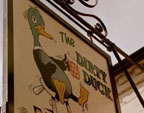 Head south to Cotswolds. Stop for lunch at The Dirty
Duck in Stratford on Avon, frequented by the actors from the
nearby Shakespeare Memorial Theatre. Continue south to some
fine pubs for your 2 night stay. Explore the honey colored
stone villages and their many lovely old pubs. Head south to Cotswolds. Stop for lunch at The Dirty
Duck in Stratford on Avon, frequented by the actors from the
nearby Shakespeare Memorial Theatre. Continue south to some
fine pubs for your 2 night stay. Explore the honey colored
stone villages and their many lovely old pubs. Day 4: Cotswolds 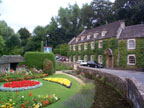 Explore the Cotswolds. Stop for lunch at the Swan
Inn in Bibury and have a picnic in the picturesque courtyard,
and afterwards stroll along the river to feed the ducks and
the huge trout. Explore the Cotswolds. Stop for lunch at the Swan
Inn in Bibury and have a picnic in the picturesque courtyard,
and afterwards stroll along the river to feed the ducks and
the huge trout. Day 5: Cotswold / Chipping Norton 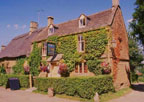 Visit the charming Chipping Nortan. Afterwards stop
at the village Great Tew at the Falkland Arms. Continue to
Wiltshire and overnight at the Woodbridge Inn, North Newton, a
16th century country inn situated between the ancient stone
circles of Stonehenge and Avebury. Visit the charming Chipping Nortan. Afterwards stop
at the village Great Tew at the Falkland Arms. Continue to
Wiltshire and overnight at the Woodbridge Inn, North Newton, a
16th century country inn situated between the ancient stone
circles of Stonehenge and Avebury. Day 6: Chipping Norton / Thames Valley / Royal Berkshire  Drive along the Thames Valley and possibly stop at
the Blue Boar Pub in Chieveley. The "Blue Boar was left at the
pub by Cromwell's men prior to the Battle of Naseby in 1644
and to this day sits outside on the plinth! Continue to Royal
Berkshire for your overnight stay at a country Pub. Drive along the Thames Valley and possibly stop at
the Blue Boar Pub in Chieveley. The "Blue Boar was left at the
pub by Cromwell's men prior to the Battle of Naseby in 1644
and to this day sits outside on the plinth! Continue to Royal
Berkshire for your overnight stay at a country Pub. Day 7: Royal Berkshire / Depart London 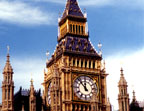 Drive back to London. Don't forget to drop off your
rental car! cheers !!! Drive back to London. Don't forget to drop off your
rental car! cheers !!! |
||||||||||||||||||||||||||||||||||||||||||||||||||||||||||||||||||||||||||||||||||||||||||||||||||||||||||||||||||||||||||||||||
|
| |||||||||||||||||||||||||||||||||||||||||||||||||||||||||||||||||||||||||||||||||||||||||||||||||||||||||||||||||||||||||||||||
 |

Argentina Wines—
"Yum–Yum"
by
Vivian Lewis
Copyright © Vivian Lewis—Global Investing 2003
Martin, our host, married into a family of wine distributors in western Argentina. Yet, to be
polite, he kept offering us ice-cubes to add to our glasses of the excellent red wine he was serving
from the family cellar."Yum–Yum"
by
Vivian Lewis
Copyright © Vivian Lewis—Global Investing 2003
And he is actually rather sophisticated compared to some wine-drinkers in this country. At a restaurant in the provinces serving up the usual huge parrilla (barbecued steaks), we watched fellow diners adding to their wine not just ice, not just bottled water "con gaz", but also Coca Cola!
Argentine vintners are clearly not appreciated by their countrymen.
Yet the wine they produce is of exceptional character and quality. I am not going to talk about white wines, although Argentina produces a fine Chablis-style wine, not as flinty as the French originals but not marred by sweetness as in California. It makes Chardonnay and Sauvignon Blanc. It makes rosado (rose) and cava (bubbly). I will talk about Malbec, a red wine.
Malbec accounts for more acreage under the grape here than any other variety. And we are talking about a lot of wine. Argentina is the 5th largest wine exporter in the world, putting about 16 million hectoliters out per year.
Malbec is a European grape still used legally in the Bordeaux region of France and in parts of Italy as a "wine-doctor" to add character to vintage red wines. But it is not now grown on its own in the prestige vineyards of southwestern France.
This is in contrast to the history of Malbec a few centuries ago. Then the inky-black wine had a tremendous following in, of all places, the palaces of the Czars. It was then the main grape variety used to make the wines of Cahors, which were best-sellers in the Russian Court and also used as consecrated wine in the Russian Orthodox Church.
Today the Malbec of Cahors has largely been uprooted and replaced with Merlot. Merlot is better at resisting damp winters than Malbec. But it has achieved a new success in South America, mainly Argentina but also in Chile. There some of the advantages of Merlot are reduced by different climate conditions. And of course, Malbec is an easier product to sell in a world awash with Merlot. It is rich and fruity and high in alcohol (about 13 1/2%) which means it is nice to drink relatively young and can be stored to improve with age. It has a generous taste in the mouth, with lots of fruity overtones. It smells wonderful.
Argentine wine production is centered on the Mendoza province. This is at 33 degrees latitude south of the Equator, approximately the same level as Bordeaux and the Chianti fields, except it is south of the Equator, not north. The altitude is 600 to 1200 meters in the foothills of the Andes, with the whites grown at the top of the slopes and the reds below. Key to the difference is that the area of Mendoza is much drier than the vineyards of Europe or California, cut off from rainstorms by the high Andes.
Argentina is in a financial crisis and this even affected its ability to export wines. It also has given it a potential edge against the much pricier Chilean Malbec. In 2001-2 (Argentina's vintages take place in the spring), wine sales fell sharply because the currency crisis discouraged export efforts. Last year, most exports went to Brazil, which doubled its demand for wine from its Mercosur partner, and to a lesser extent to Paraguay, the local smuggling center. This year's vintage, on the other hand, will take place under more stability and go further afield. The grapes are already being harvested now.
It is still early days, however, on wine promotion, and Argentina also needs to educate its own population about wine. It has created a body to do this, called la Fundación Export.AR, which plans to participate in fairs and tastings in the countries where its exports are admitted most freely: The U.S., Canada, Britain, and northern Europe (Britain, Sweden and Holland). And Argentina itself. (Southern Europe restricts imports of wines competing with the native products.)
While we were in Buenos Aires, we benefited from a promotion for Malbec, not by the semi–government body, but by the Trumpeter brand, an excellent Malbec. Restaurant Orviedo (Beruti 2602, near where we were staying, tel 4821 3741, restorviedo@interlink.com.ar) offered a set 3–course "Trumpeter" menu with 4 choices for each course, including a bottle of Malbec wine and bottled water. This cost all of pesos 37 per head, about $12. This is a gastronomic haven amidst the grill restaurants, serving classic Spanish-Argentine food in a classic site. Trumpeter is also the selected Malbec of the Holiday Inn hotels in Argentina.
But even among restaurant Malbecs, Trumpeter has competition. We also like Bodegas Norton and Bodegas Trapiche Malbec.
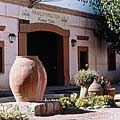 Because of its pricing edge, and because so little has been done to promote Argentina's wines so
far, we think this could be a long-term winner. Argentina has just launched a plan called
"Vitinicola 2020" and if it works, the country expects to exports $2 billion of wine by that date
and snatch 10% of the world market for flat wines.
Because of its pricing edge, and because so little has been done to promote Argentina's wines so
far, we think this could be a long-term winner. Argentina has just launched a plan called
"Vitinicola 2020" and if it works, the country expects to exports $2 billion of wine by that date
and snatch 10% of the world market for flat wines.
Trumpeter is sold in the U.S., imported by Billington Imports of Virginia, a specialist in wines from the southern hemisphere. (7536 East Fullerton Court, Springfield VA 22153, ( www.BillingtonWines.com ). In New York, it sells for about $6.95 per bottle, with a discount for a dozen.
It is produced in Mendoza province in Argentina at La Rural, by the descendants of the 19th century founder of the firm, Don Felipe Rutini.
The family run a wine museum in Maipu, in Mendoza province, which they claim is the largest wine museum in South America. It is open Monday to Saturday 9 to 5, and Sundays 10 to 2. It is free. The place has anything and everything connected with wine-growing and wine-making. Attached to the wine museum is another collection, of religious images and carvings from around the world, also started by Don Felipe and maintained by his family. Incorporated in the museums in the palatial home Don Felipe and his family from about 1850. The museums are at Montecaseros 2625, 5513-Maipu, Mendoza, Argentina.
Please contact Vivian directly at—
And it is also the site of South America's most spectacular waterfall. The falling waters take your
mind off Bin Laden's agents in the area. Iguazu Falls, also called Las Cataratas (Sp.) or As
Cataratas (Port.) beats Latin America's alternatives hands down. To be sure, Angel Falls in
Venezuela is higher. But that only is true when the waters are running, about 4–6 months in the
year. And Kaieteur Falls in Guyana is higher, but also simpler, just one big dump of water, so high
that you cannot see or hear the bottom. What makes Iguazu so spectacular is that there are about
200 separate waterfalls and you can take them in and hear them.
Moreover, unlike the Guyana site, you can get to Iguazu relatively easily, at least if you are
willing to stay on the Argentine side. We flew from and to Buenos Aires, on one of 6 daily flights.
The cost is 656 pesos per person return, on either Aerolinas Argentinas or LAPA. We used a
Buenos Aires travel agent who speaks English to book everything.
Right now Americans have to get visas in advance (not at the border) to cross over to Brazil,
which kept us from both the Brazilian and Paraguayan coasts (because unless you charter a boat
the only way to get to Paraguay is by crossing Brazil.) Yet even staying on the Argentine side we
had a glorious adventure. Had we been able to visit the Brazilian side, we learned from some
French tourists at our hotel, we would have been able to stand above the falls and look down 200
or 300 meters to see them in all their glory. We would also have visited a hydroelectric plant,
which the French people thought was ho-hum.
The Iguazu River, born high in Paraguay, crashes down multiple steep falls to the lower Iguazu at
the border of Brazil and Argentina. The river winds up in the River Plate, just as Niagara Falls
winds up in the St. Lawrence.
We stayed, as you should too, at the Sheraton within the national park on the Argentina side. This
is the best way to get your fill of Iguazu. It is the only hotel inside the park. If you stay in town
you will spend a lot of time taxiing or bussing to the park, and you will have to pay admission (30
pesos, about $10) each time you enter the park. The hotel costs pesos 330 ($110) per night
double occupancy, including all taxes and breakfast, and you only pay park admission once, so it
works out cheaper.
While there are guides and jeep safari expeditions on offer, in all known languages (including
Arabic, presumably for the terrorists; the 3-state region is a center of Latin American Arab life)
you can almost certainly do it yourself.
There are four trails to see the falls from the Argentina side. The upper (circuito superior) trail,
which takes about 30–45 minutes (depending on how long you stare at the waters with your
mouth open), gives you a good overview of the site. You walk along well maintained metal
bridges and paths which are all level. This path is fine even for wheelchairs or baby carriages.
The lower (inferior) trail, more difficult since you climb up and down paths to get closer to the
rushing waters, takes about an hour to 90 minutes. A side trip will take you by Zodiac raft to an
island, Isla San Martin, improbably located in the midst of the cascades, from which it is a tough
hike to the bit of the island opposite the largest number of falls. It closes about 4 p.m. because the
boatmen want to leave you enough time to get to the front and back before the park closes
(7P.M.) On nights of a full moon the park remains open later.
A different path runs to the Gargutas del Diabolo (Gargutas do Diabolo in Portuguese). It is quite
a walk, about 2.2 kilometers, but you can also take a free train there, which still leaves 1.1
kilometers you have to walk. We walked one way and took the train back. This is a spectacular
horseshoe shaped falls. It used to be part of the main causeway system but the river undermined
the paths. With the mist and spray, you get the feeling that the falls are hole in the earth, because
you cannot see the ends of the horseshoe.
There is also a mirador, a viewing tower, near the park entrance by the Sheraton, but it was
closed. Alongside it, Indians sell handicrafts. The quality is good and the prices are lower than in
the shops or the town.
We spent only one night at the Sheraton, which we found enough. That meant we had to ignore
the drizzles (this is a semi-tropical rain forest after all) and just walk on regardless. The water was
warm enough that it did not bother us. You can buy plastic raincoats but in the heat they would
have been more uncomfortable than a bit of rain. Take a light raincoat, insect repellent, and
sunscreen to cover all eventualities.
If you insist on spending more than one night at the Sheraton, you will have to do more than the
falls. You can go on nature walks through the forests, or go a bit further afield to visit the Jesuit
Missions on the Argentine side, featured in the movie Mission.
Although we did not do a nature walk, we did spot lots of wildlife just hitting the falls. Best were
the coatimundis, a sort of Argentine raccoon. They are practically tame. We also saw salamanders
and an iguana, which were not as cute, and a tapir and some great birds of prey (condors?)
lunging at their victims at the bottom of the falls. These were definitely not cuddly like the coatis.
And, oh yes, a toucan with a brilliant yellow beak.
At the hotel, we had the set menu dinner (pesos 39, about $13) while a harpist played. Most
Argentines there refused the set menu in order to gobble up steaks, but we preferred the local
ingredients of the set menu. The first course was palm hearts and palm leaves in a salad, followed
by a fish from Iguazu called the surubi, which was excellent.
Less interesting was lunch at El Tio Rucki, the second best restaurant in Puerto Iguazu, the local
town. The best one is closed at lunch. This was Lebanese owned and managed, mainly serving
huge portions of grilled beef and, a special touch, offal. The local Brazilian town is Foz de Iguazo,
off limits to us this time. You can also see across the river to Ciudad del Este, the Paraguayan
city.
Puerto Iguazu, apart from its role as a tourist center for those not willing to stay in the Sheraton,
is a Graham Greene town, full of stray dogs, dead kittens, and lots of Arabs. According to our
taxi driver (pesos 60 roundtrip to and from the hotel for up to 4 passengers), Paraguay is
worse.
The hotel has a gift shop, run by a Portuguese, where we bought coati dolls for our grandchildren.
The cross-border game is big here. A few years ago, after the Brazilian real was floated,
Argentines stayed on the Brazilian side where their pesos went further. Today, all the Brazilians
are on the Argentine side.
Our travel agent was Claudia of Target Agency, 4814 0962 in Buenos Aires, address Calle Callao
1062 (corner Santa Fed). She speaks English.
Please contact Vivian directly at—
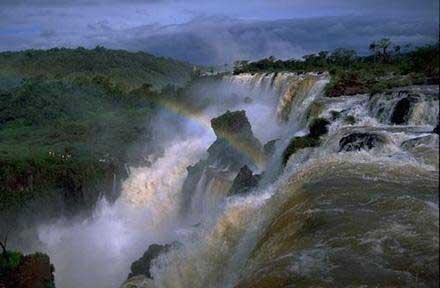
The three-country border zone where Paraguay, Brazil, and Argentina come together is a center
of drug trade, contraband, and terrorism. Right now most of the visible smuggling seems to be by
Paraguayan Indians hitting the Argentine supermarkets to benefit from the cheap Argentine pesos,
but there are more sinister goings on too. Many of the Indians seem to finance their grocery
shopping by selling woven handbags, carved animals, straw work, bead jewelry, and feather
headdresses. Yet this seeming backwater is where the murderous bombing of the Jewish cultural
center of Buenos Aires was plotted, the largest anti-Semitic attack since World War II (not
counting attacks on Israelis), apparently financed by Iran.
by
Vivian Lewis
Copyright © Vivian Lewis—Global Investing 2003
Check with us for low rates—
International Airfares
|
Stay current with Your One-Stop Information Center!—Your Air! Your Hotel! Your Car!
Your Cruise! Your Complete Travel! Above! Over! Through!...and...Under!— |

"The Soft Scuba Adventurer"
 We are back! We have refocused our scuba operations. We offer you even better service.
Your diving and accommodations cost you about the same—whether you use our services or
our competitors'. We simply give you better service. We want your repeat business to other
dive adventure destinations. When we work together, you receive customized service. We
"mother hen" a little. You deserve your best-possible underwater adventure. We want you
back with us again...and again.
We are back! We have refocused our scuba operations. We offer you even better service.
Your diving and accommodations cost you about the same—whether you use our services or
our competitors'. We simply give you better service. We want your repeat business to other
dive adventure destinations. When we work together, you receive customized service. We
"mother hen" a little. You deserve your best-possible underwater adventure. We want you
back with us again...and again.
All dive and accommodations cost about the same. Let's talk about airfare. Airfare can vary considerably. Many times, if you reserve with sufficient lead time, we can get the lowest fares through bulk air contracts. We always compare our bulk fares with what our wholesalers offer. Oftentimes, wholesale fares are lower than bulk air! We also make use of the leading Internet technology available. Our FareBeater® Engine sometimes beats our wholesalers! For your FREE consumer report about how much FareBeater® fares are lower than those offered by Orbitz®, Expedia® and Travelocity® visit—
[Yes, you may use it!—test fly it and compare!]
Micronesia comprises a vast
area in the South Pacific. Truk (Chuuk) Lagoon, Palau and Yap are very popular dive
adventure destinations. Discover new Micronesian dive adventure destinations—Bikini, Guam,
Kosrae, Pohnpei, Saipan, Tinian & Rota, and Ulithi. Many WWII Pacific Campaign battles
were fought throughout Micronesia. Well-preserved wrecks are "artificial" reefs over half a
century young. Overgrown with great variety of sealife! World-class diving!
Truk Lagoon, Palau, Yap, Guam,
Kosrae, Saipan, Tinian, Rota, Pohnpei, Ulithi, and
Bikini
Diving—You travel
from around the world. Experience Micronesia's most valuable treasure...it's coral reefs and
spectacular wrecks. Visibility often exceeds 100 feet. You have a choice of islands. Enjoy drift
diving, shallow and deep wreck diving and greater variety of colorful sea life. Marine
biologists have discovered more species in Micronesia than in any other part of the
planet.
Entry—You need a
Passport—and a return or ongoing airline ticket.
Weather & Water—Enjoy your best
conditions from January through May—which is low season
as far as prices are concerned. Water temperature remains ~84 deg.F. year round. Visibility is
usually over 100 feet.
Stone money dates back 1,800 years. Ancient Yapese navigators sailed outrigger canoes
across hundreds of miles of open ocean, exploring neighboring islands. On Palau, they
discovered caves containing sparkling light brown material known as crystalline calcite.
Using hand tools made of shells and sticks, they quarried and sculpted stone disks ranging
from 2 to 12 feet in diameter. Each piece has its own legend with its value directly related to
the degree of difficulty in obtaining it. Stone money banks lie deep in the jungle where
villagers store their wealth in neat rows, propped up in impressive displays.
A trip to the outlying districts is stepping back in time. Men's meeting houses are built of
huge logs and palm thatch. The biggest treat is a traditional Yapese stick dance. Islanders
perform this ancient art in their finest dress.
Photo by: Fred
Altrieth–12/2000  Yap—Of all
Micronesian islands, Yap is most intriguing.
With island culture intact, the people do things the same way their forefathers did. The stone
money is a good example. Yap is the only place in the world where huge, carved stones
became a traditional form of money.
Yap—Of all
Micronesian islands, Yap is most intriguing.
With island culture intact, the people do things the same way their forefathers did. The stone
money is a good example. Yap is the only place in the world where huge, carved stones
became a traditional form of money. Manta Rays—Yap is
the unchallenged leader of Manta
Ray diving. Divers see mantas on more dives and more mantas per dive than anywhere else in the
world. Most encounters occur in depths of 25–50 feet, usually inside channels that lead from
the lagoon to the open sea. The mantas line up single file in groups of four to six, taking their
turns being cleaned. They appear unafraid of divers. Sweeping past the divers, they execute a
tight U-turn and come back toward the divers—hovering just a few feet above the corals.
These gentle giants have wingspans of 10–20 feet and weigh 1,000 pounds or more. A close
encounter with these magnificent creatures is one of the most exhilarating experiences a diver
can have.
Manta Rays—Yap is
the unchallenged leader of Manta
Ray diving. Divers see mantas on more dives and more mantas per dive than anywhere else in the
world. Most encounters occur in depths of 25–50 feet, usually inside channels that lead from
the lagoon to the open sea. The mantas line up single file in groups of four to six, taking their
turns being cleaned. They appear unafraid of divers. Sweeping past the divers, they execute a
tight U-turn and come back toward the divers—hovering just a few feet above the corals.
These gentle giants have wingspans of 10–20 feet and weigh 1,000 pounds or more. A close
encounter with these magnificent creatures is one of the most exhilarating experiences a diver
can have.
Yap Dive Sites—Yap offers a wide range of superb
diving experiences. On literally hundreds of places around Yap, the diving ranges from
superb to absolutely outstanding.
Gilmaan Wall—A vertical wall dive
at the southern tip of Yap where the reefline juts out two miles from shore. Surrounded
on three sides by open ocean, it is usually a drift dive. The wall begins at 20 feet and
plummets straight down to 160 feet. Underwater visibility ranges from 150 to 200 feet.
The face of the wall is covered with hard corals, gorgonian fans, Daisy Corals and bright
yellow crinoids. The wall is honeycombed with small caves and crevices occupied by exotic
reef fish. With exposure to the sea, Gilmaan Wall is the site of encounters with Dogtooth
Tuna, turtles and Eagle Rays. Sailfish, Manta Rays, sharks and Whitetail Stingrays, also can
be seen.
Photo by: Fred
Altrieth–12/2000
Yap Caverns—A unique combination
wall dive and coral grotto swim–through, this site is marked by a sandy coral shelf that cuts
into the reef, forming a natural amphitheater. The shelf at a depth of 30 feet is surrounded by
vertical coral that rises up to within 10 feet of the surface. Running off the north side is a
series of caverns, caves and passageways that tunnel beneath the reef. Lionfish Wall—Another exciting
vertical wall begins at 18 feet and plummets straight down to 160 feet. Drifting this wall feels
a little bit like sky diving because of the 200–foot visibility. The most outstanding attraction
is the large community of Lionfish that lives in small caves and crevices on the face of the
wall. There are literally dozens of these spectacular creatures—each of them adorned with lacy
fins and slender spines.
Lionfish Wall—Another exciting
vertical wall begins at 18 feet and plummets straight down to 160 feet. Drifting this wall feels
a little bit like sky diving because of the 200–foot visibility. The most outstanding attraction
is the large community of Lionfish that lives in small caves and crevices on the face of the
wall. There are literally dozens of these spectacular creatures—each of them adorned with lacy
fins and slender spines.
You travel all that distance...you want to dive more than one island. We offer you many "specials"—depending upon when, where...and... how long. Explore your options. Make some plans. Get back with us. We will customize your best deal—we guarantee it! Fin over now—
Subscribe and download your FREE eReport—
"How to Enhance Your Dive Adventures"
Voice: (941) 331-2086 Fax: (208) 955-7705 Email us now:
We offer you more Dive Adventure Destinations. |
Stay current with Your One-Stop Information Center!—Your Air! Your Hotel! Your Car!
Your Cruise! Your Complete Travel! Above! Over! Through!...and...Under!— |
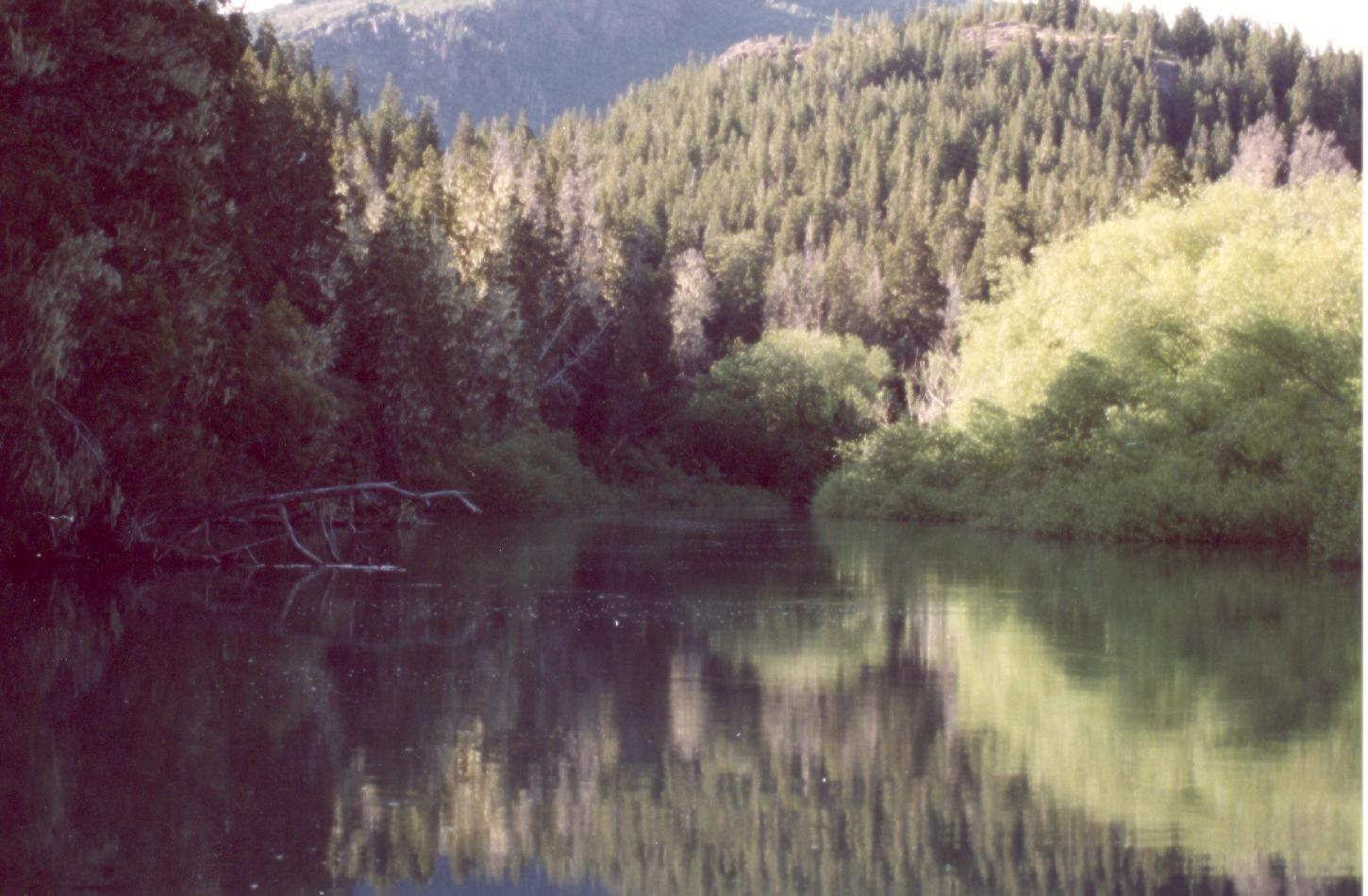
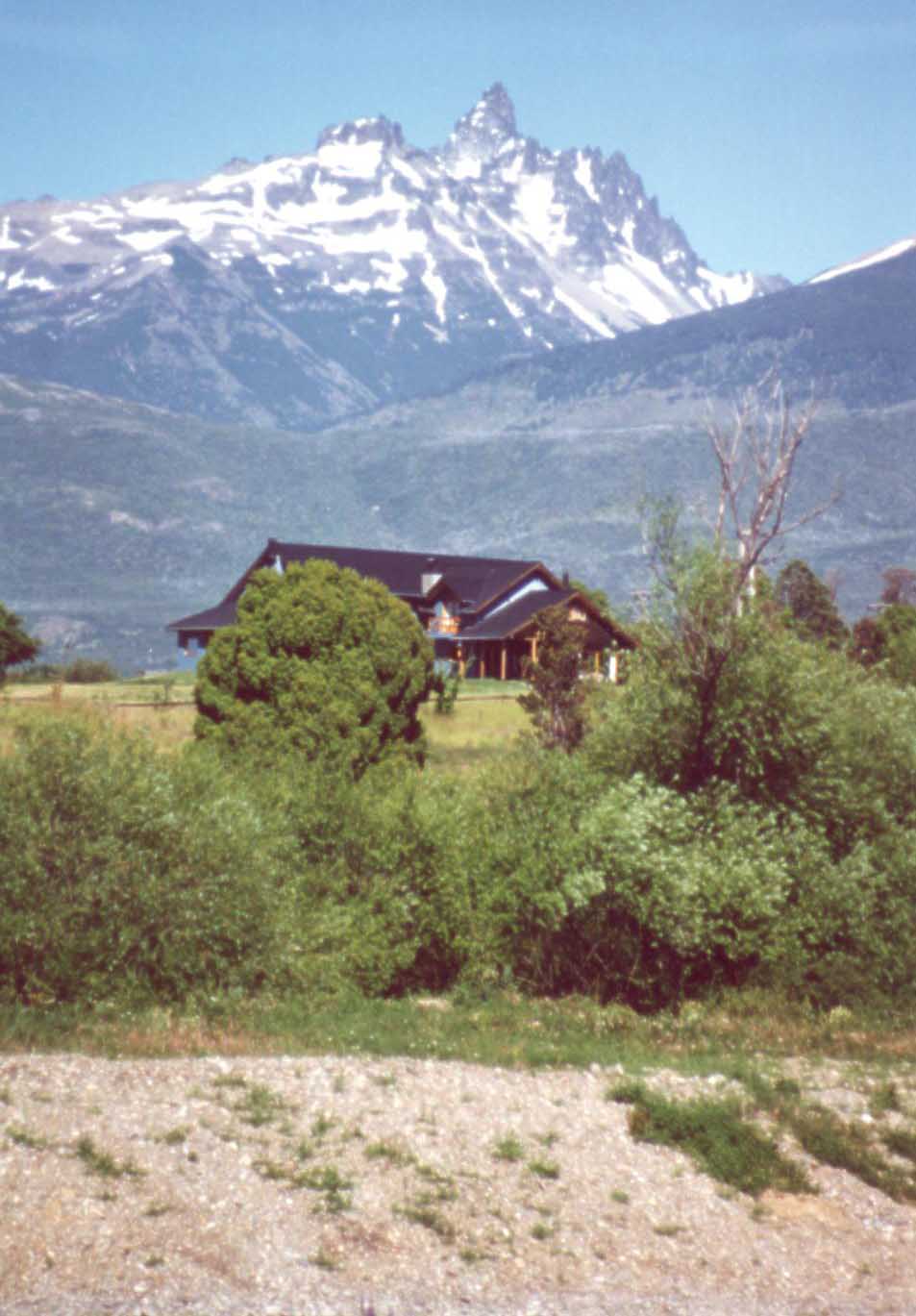 Although we did not go south to his ranch, we met at the Morada, Martin O'Farrell, who despite
that name is an Argentine, and a champion fly fisherman. He came by to help the Ramoses deal
with the gringos, since he speaks good English. Martin runs another ranch about 100 miles south
of El Bolson near the town of Esquel. His ranch offers fly fishing and lessons in nabbing trout. In
light of the environmental awareness of the locals, once your catch has been measured, you throw
it back into the rushing waters. Catch and release. If you are an angler, this is as close to heaven
as you can get.
Although we did not go south to his ranch, we met at the Morada, Martin O'Farrell, who despite
that name is an Argentine, and a champion fly fisherman. He came by to help the Ramoses deal
with the gringos, since he speaks good English. Martin runs another ranch about 100 miles south
of El Bolson near the town of Esquel. His ranch offers fly fishing and lessons in nabbing trout. In
light of the environmental awareness of the locals, once your catch has been measured, you throw
it back into the rushing waters. Catch and release. If you are an angler, this is as close to heaven
as you can get.
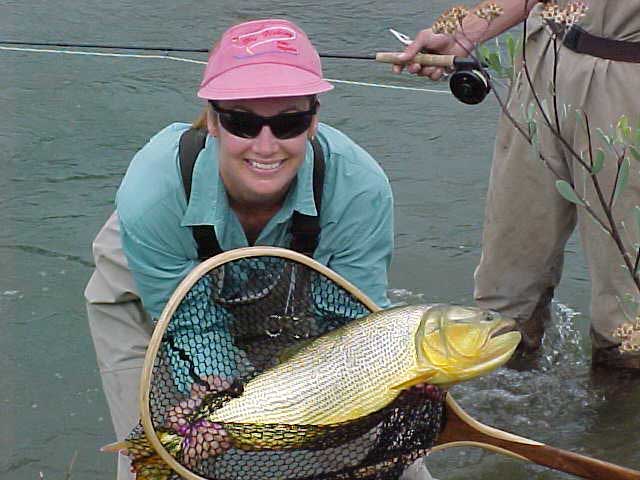 Editor Note: The following article by Martin O'Farrell has been edited only for more
clarity. These are his own words!
Editor Note: The following article by Martin O'Farrell has been edited only for more
clarity. These are his own words!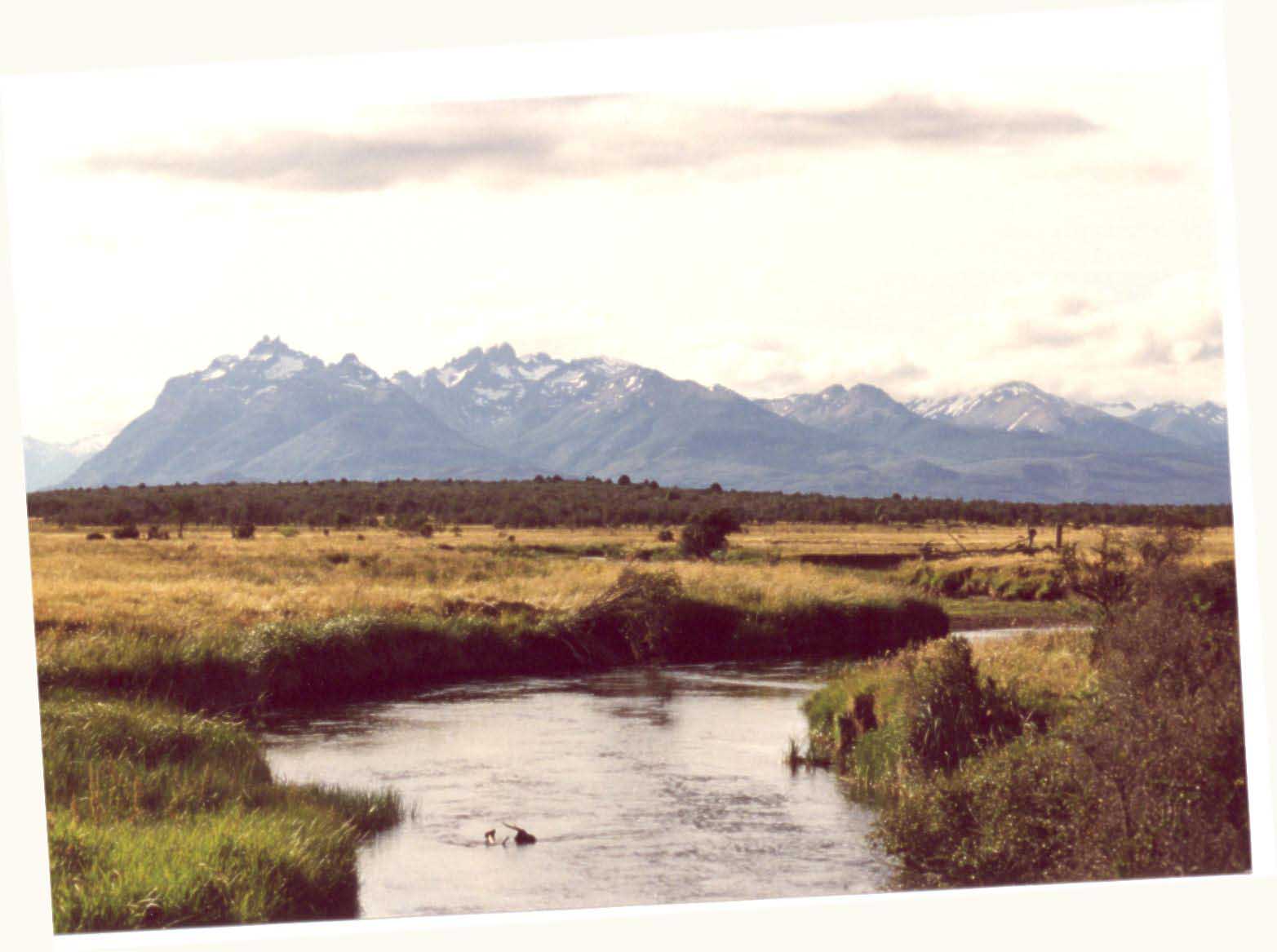 Read—
Read—
